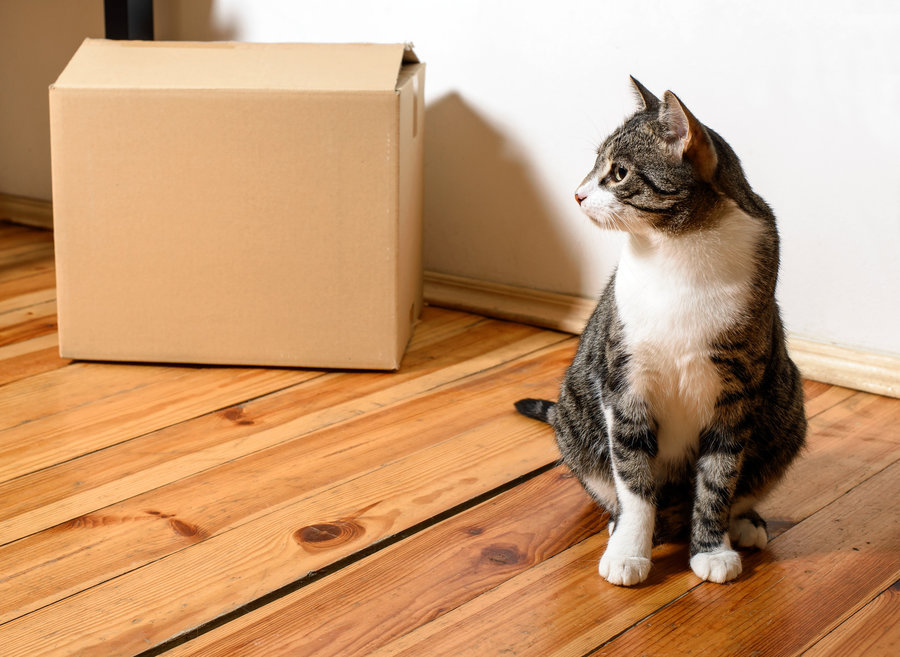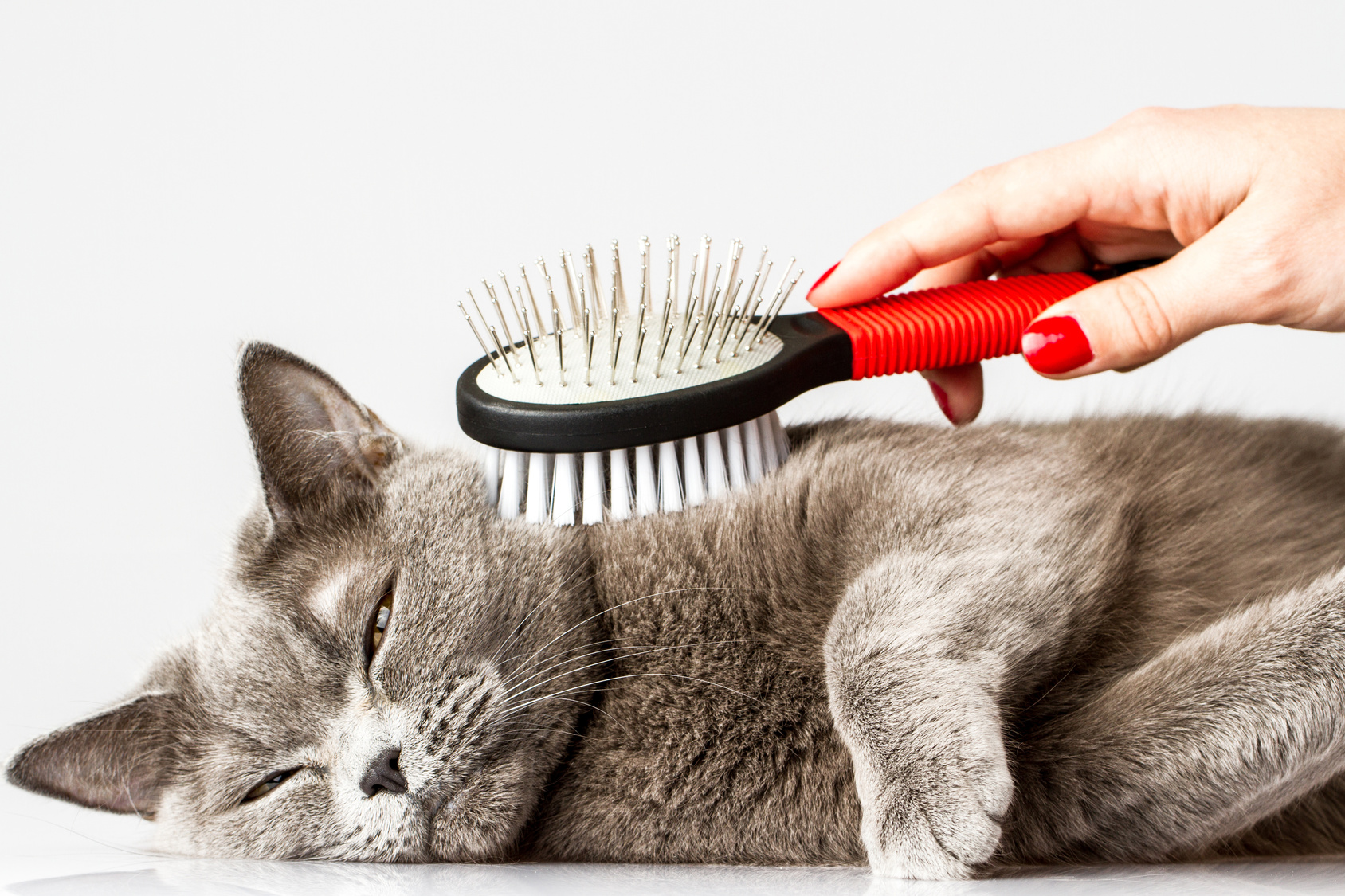Getting ready to shift gears and move with your cat? Perhaps you're upgrading to a stylish new apartment in the hip part of town. Or maybe you've finally snagged that spacious, charming house you've always dreamt of.
Now picture this: amidst the towering boxes and bustling movers, your cat decides this is the time for an adventure. Can you blame her? With all the novelty and chaos, it's a feline's dream come true!
But this dream can quickly turn into a nightmare. Moving day can be a risky event for our feline friends.
Too many kitties find themselves lost amid the shuffle or injured by unforeseen hazards.
Remember that one time a friend's cat decided to curl up in a half-packed box and nearly got sealed inside? Yep, moving with a cat can bring unexpected surprises!
However, don't let these concerns dampen your moving day excitement. With a pinch of planning, a spoonful of foresight, and a dash of cat-proofing, you can ensure your move goes smoothly for both you and your feline companion.
This guide is here to help you navigate this process. Also, to ensure that your precious cat arrives at your dream home safe, sound, and ready to explore new territory!
Pre-Move Prep: Getting Kitty Ready
1. Secure a Spacious Carrier: Kitty's Temporary Home
A big move calls for a spacious, sturdy carrier for your cat. Ensure it's large enough for your feline friend to move freely within it. If you're moving long-distance, you might need to consider a dog-sized crate.
Let's make this carrier your cat's second home - keep it open weeks before the move, allowing your cat to explore. Make it cozy with a favorite blanket or pillow.
If your move entails a long road trip, read these tips by our members on what to prepare: General Tips For Road Tripping with Cats.
Help your cat get used to the carrier or crate by leaving it open in your current place for several weeks before the move, allowing Kitty to go in and out at will. Make the inside of the carrier more inviting by placing a familiar blanket or pillow inside.
Read more tips on how to help your cat become used to its carriers here: Beware The Dreaded Cat Carrier.
2. Prepare for the Unthinkable: The Importance of ID.
The guidelines in this article should help you minimize the risk of losing your cat during the move.
However, the risk is still there, so please make sure your cat is properly ID'd. If your cat doesn't regularly wear a collar, use the weeks prior to the move to get him used to wearing one.
Make sure there's a solid name tag attached to the collar with your name and current phone number. Consider having your cat microchipped as well.
Read more: How To Save Your Cat’s Life With Proper Identification.
3. Safe Packing: Protecting Kitty from Hazards.
Packing involves items that can pose a threat to your curious cat.
Keep dangerous tools like scissors, tapes, and strings out of reach. And always check for a furry stowaway before sealing each box!
4. The Safe Room: Kitty's Haven Amidst Chaos.
Your cat will need a safe room in your current place for moving day, and one in your new place as well. Think ahead and designate such rooms in both places.
These will be rooms the movers will not be entering. They should be rooms which you can lock and take the key away with you.
Make signs which read: "Cat's Room - Do Not Enter Or Knock" and don't forget to have something to stick them on the doors with!

5. Organize Kitty's Essentials: Be Prepared
Unpacking dozens of boxes can take a while but you should be able to locate everything you need for your cat right away. Cat toys, beds, treats, food, and litter should all be packed in a clearly-marked box.
Make sure you let the movers know where to place this box so you can easily find it in your new place.
SIGN UP FOR THECATSITE'S EMAIL UPDATES >
6. Plan Ahead: Locate Nearby Vet Clinics.
Hopefully, it's going to be a while before you need to see a veterinarian but you never know... Make a list of the nearest veterinary clinics, including emergency clinics.
Have the information stored within reach. If you don't have a car, find out in advance how you can get Kitty to the clinic in case of emergency or find a veterinarian who makes emergency house calls.
The Big Day: Protecting Kitty Amidst the Hustle
Whether you're using a professional moving company or having friends come over to help you put everything on a U-Haul, moving day is a dangerous day for your cat.
The hustle and bustle of moving furniture and huge boxes can send even the most relaxed cat scurrying out the main door, sometimes never to be seen again. Don't let that happen to your cat!
1. Moving Day: Keeping Kitty Safe.
This is where the previously-designated safe room comes into play. Get an estimate from the movers on how long they'll be inside the house. If it's a quick move of under an hour, you can also keep your cat within a securely latched cat carrier in a quiet corner of the house.
If it's going to take longer, a safe room is a better option, allowing Kitty access to the litterbox and food dishes, room to move, and possibly even the opportunity to nap in his favorite cat bed.
Make sure the safe room is locked and that only you have a key. Put a sign on the door warning movers that this room is out of bounds. You don't want them rattling the doorknob looking for stuff to take out.
If you need to enter the safe room for any reason - including to finally put Kitty into his carrier - make absolutely sure the main door is shut and that there's no way for your cat to make a dash for it, out of your house and into the great unknown.
All of the above applies to the safe room in your new place as well.
2. Travel Essentials: Litterbox and Food Dishes.
Your cat will need to eat and use the litterbox during moving day. You'll be keeping those with him in the safe room, so they won't be going with the movers' truck.
These items go with Kitty and you in the vehicle you're using to move between the two places (your car or a taxi). Have a large box ready where you can put the litterbox itself as you take it with you.
Use a separate box for the food dishes and some extra food for the first few hours after the move.
For a longer drive, see the tips about using the litterbox on the road here: Road Tripping With Cats: Food, Drink and Litterboxes.
3. Transit Safety: Always Use the Carrier.
Once it's time for you and your cat to leave the house, it's carrier/crate time. No ifs, ands, or buts. For a short drive, a large carrier will do.
For a longer road trip, use a crate. Either way, never drive with a cat loose in the car, and never carry a cat in your arms outside your home.
4. Medications: Keep Them Handy.
If your cat needs any medications make sure you pack them in your own bag where you can easily find them when they're needed.
See This Cat Medicine Organizer Bag On Amazon.
Settling In: Easing Kitty into the New Home
1. Initial Adjustment: Keep Kitty in the Safe Room.
Just like before, your cat needs to be safely locked up inside one room as the movers unpack their truck and bring the furniture and boxes inside.
Set up the litterbox and food and water dishes, and open the carrier. Make sure in advance that all windows are properly shut. With this being an entirely unfamiliar room, your cat may attempt to wriggle his way out of it, including through blinds or anything which might look like a possible opening.
It is up to you to make sure the room is cat-proofed and properly sealed and has no hard-to-reach nooks or crannies where your cat can get stuck.
2. Exploration Time: Cat-proof Your New Home.
With the movers gone, you can open the safe room's door once you make sure all other doors and windows in the new house are shut! Alternatively, you can choose to keep your cat in the safe room for a few more days, giving him time to adjust to the new place at a more gradual pace.
There's no one rule here and how fast you can familiarize a cat with a new home depends on the size of the place and the cat's temperament.
Fast or slow, wherever your cat is allowed to explore should be cat-proofed for safety, especially any windows or doors through which Kitty can get out.
3. Outdoor Access: Give It Some Time.
Staying indoors only is safer for your cat. However, even if you choose to let him out, don't do so for six-eight weeks after the move and not before he has completely settled in and seems relaxed.
For your first few outings, use a harness and leash, and do not travel more than a few yards outside the door. Let your cat smell the area for a few minutes at a time and then guide him back home.
It's going to take a while before his perception of "his territory" is fully adjusted to allow him to return home from his outings. Again, please consider keeping Kitty indoors only and allowing him to enjoy the outdoors only in the safety of an enclosure or accompanied by you using a leash and a harness.
Read more: Cat Enclosures and Harness And Leash Training For Cats.
Smooth Sailing: Ensuring a Safe and Stress-Free Move
With thoughtful preparation and careful execution, you and your cat can transition smoothly to your new home. The key lies in considering your cat's comfort and safety at every step. Understanding that moving can be more stressful for them than it is for you.
Remember, every cat is unique, and what works for one might not work for another. Adapt these guidelines to suit your cat's personality and needs, and you're set for a successful move.
If you have more tips to share or comments on this article, please share them in the comments section below. If you have questions about moving with your cat, post them in the cat care forums where our members can try and help.
SIGN UP FOR THECATSITE'S EMAIL UPDATES >
Note: We may get commissions for purchases made through links on this page.







5 comments on “How To Move With Your Cat To A New Home In A Safe Way”